What is the Law for Possession of a Controlled Substance?
According to the State of Idaho, it is unlawful for any person to possess a controlled substance unless the substance was obtained directly from a valid prescription or order of a medical provider while acting within the expected scope of practice or except as otherwise authorized by law.
What are the Different Types of Possession?
There are two ways that drug possession in Idaho can be established:
- Physical possession: This type of possession is when someone has physical control of an item. For example, if the person has the item or substance in his or her hand or pocket.
- Constructive possession: A person is guilty of constructive possession of something if:
- The person is aware of its presence, and
- Also has the ability to control the item or substance
Many possession cases focus on whether or not the evidence shows the defendant had constructive possession of the substance. For example, if a substance was found in a car or a room with the defendant, then the ability to control the substance was present, but did they also have knowledge of its presence?
The principle of constructive possession also allows for multiple people to be convicted of possession of the same substance.
What is a Controlled Substance?
A controlled substance is considered to be any chemical substance that the State of Idaho has deemed to be illegal for possession, selling, manufacturing, or distributing. The specific substances that are outlawed in Idaho are categorized into six different “schedules.” The schedules categorize drugs of different severities; however, possession of any of these drugs without proper documentation will subject the individual to severe legal penalties.
- Schedule I: This class of drugs contains substances with a high potential for abuse, have no medical use, or are completely unsafe for medical use, even with medical supervision. Substances such as opiates, hallucinogenic drugs, or opium derivatives are included. Examples include: heroin, lysergic acid diethylamide (LSD), 3,4-methylenedioxymethamphetamine (Ecstasy), methaqualone, and peyote.
- Schedule II: This class of drugs contains a long list of specific substances that are illegal to possess in the State of Idaho. Schedule II substances do have medical use and can cause severe health issues when they are abused. Examples include opium, codeine, dihydroetorphine, hydrocodone, morphine, oxycodone, opium poppy, coca leaves and its derivatives, and dozens more.
- Schedule III: This class of drugs is less likely to be abused. Also, they generally have accepted medical uses that result in low to moderate risk of dependence or high psychological risk of dependence if used improperly without a prescription. Examples include: Tylenol with Codeine #3, buprenorphine products (Suboxone, Brixadi, Butrans, and Belbuca), benzphetamine, phendimetrazine, ketamine, and anabolic steroids.
- Schedule IV: This class of drugs is less likely to be abused than Schedule III drugs. While they may lead to some psychological or physical dependence, they still maintain acceptable medical use and less chance of dependency. Examples include: alprazolam (Xanax), carisoprodol (Soma), clonazepam (Klonopin), clorazepate (Tranxene), diazepam (Valium), lorazepam (Ativan), difenoxin and atropine (Motofen), midazolam, temazepam (Restoril), tramadol (Conzip), triazolam (Halcion), pentazocine, and zolpidem (Ambien).
- Schedule V: This class of drugs is minimally dangerous and presents a very low risk for abuse. These substances have accepted medical uses and present limited instances of dependence. This would include normal medicines containing some amount of a particular narcotic. Examples include: cough preparations containing not more than 200 milligrams of codeine per 100 milliliters, atropine / diphenoxylate (Lomotil), pregabalin (Lyrica), Parepectolin, and ezogabine.
- Schedule VI: This includes unconventional recreational drugs such as toluene (in spray paint), amyl nitrite (poppers), and nitrous oxide (in many aerosols).
When is Possession a Felony or a Misdemeanor in Idaho?
The unlawful possession of a small quantity of a Schedule I narcotic or any Schedule II substance is a felony that is punishable by up to seven years in prison, a fine of up to $15,000, or both.
Possession of lysergic acid diethylamide (LSD), a Schedule I nonnarcotic, is a felony, punishable by up to three years in prison, a fine of up to $5,000, or both.
Any controlled substance violation involving a nonnarcotic drug in Schedule I (not including LSD) or a substance in Schedules III, IV, V, or VI is a misdemeanor with a penalty of not more than one year in jail and a fine of not more than $1,000.
How is Possession of Paraphernalia Penalized?
Using or possessing with the intent of using paraphernalia for any of the following reasons is considered a misdemeanor that is punishable by a period of up to one year in jail, a fine of up to $1,000, or both:
- To grow, plant, cultivate, or harvest a controlled substance
- To compound, convert, prepare, or process a controlled substance
- To pack, repack, store, or contain a controlled substance
- To test or analyze a controlled substance
- To contain, hide, or conceal a controlled substance
- To ingest, inhale, inject, or administer a controlled substance
How is Drug Possession Commonly Defended?
Simply being accused of drug possession does not mean you are guilty. For this reason, contacting an attorney as soon as possible is highly recommended. Here are some common defenses used:
- The defendant did not have possession of the controlled substance: The State has a duty to prove that the defendant had possession beyond a reasonable doubt. One of the many ways to raise doubt is when the drug was found in a room or vehicle with several other individuals present.
- The possessed substance was not one covered by Schedules I through VI: In rare instances, the State may mistakenly conclude that a possessed substance was listed on Schedule I through Schedule VI when, in fact, it was not. This may happen due to an error in the chemical testing done to identify the substance. We see this most often with the field test kits resulting in false positives.
- The defendant did not know the substance was in his or her possession: Possession of a controlled substance is considered to be a general intent crime that requires the defendant to possess the substance knowingly. The purpose of this intent element is to separate what is innocent, accidental, or inadvertent conduct from criminal mischief. To secure a conviction, the State must prove the substance was knowingly possessed.
- Violation of rights by law enforcement: If the defendant is able to prove that the arresting officer violated his or her Constitutional rights when obtaining evidence, then the evidence will not be allowed at trial. This usually results in the case being dismissed.
Do I Need an Attorney?
When dealing with any sort of drug crime, you need a reputable attorney at your side. Call Tatum Wysocki Law, today at 208-999-4529 or fill out a contact form for a free consultation.




